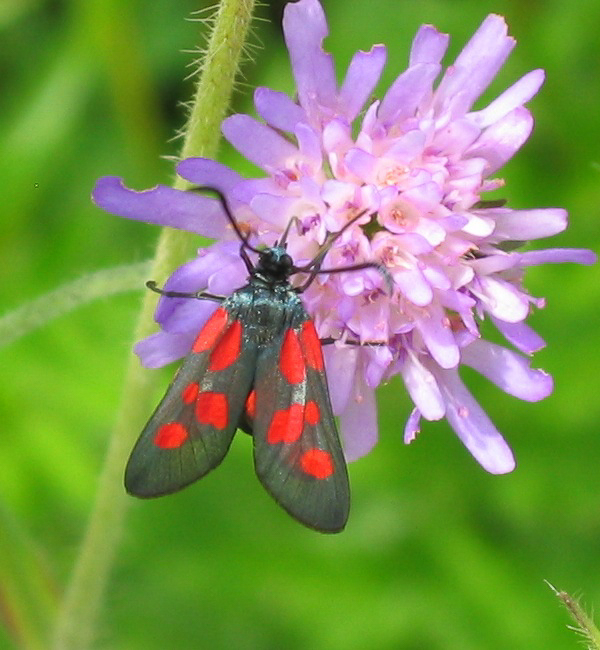
Photo © Harald Sopfle
Zygaena viciae, the New Forest burnet moth, is a member of the Zygaenidae family, found in the northern hemisphere. Since 1927 it has been extinct in the New Forest, England, after which it is named. It is also known in Europe as the small five-spotted ram.
The moth is found in southern and central Europe, and in Scotland (Z. v. argylliensis), where it survives in very small numbers. It is also found in southern Scandinavia. In the east, the range extends to Lake Baikal.
Pale green/yellow eggs are laid in clusters. The larvae feed on the leaves of clover and vetch species. Their appearance varies with region, but they are generally green, with yellow and black spots. They pupate within a cocoon attached to foliage. The adults' wingspan is 22–32 mm, they fly by day, and they are on wing in July.
Source: Wikipedia
The primary larval foodplants are Common Bird's-foot-trefoil (Lotus corniculatus) and Meadow Vetchling (Lathyrus pratensis).